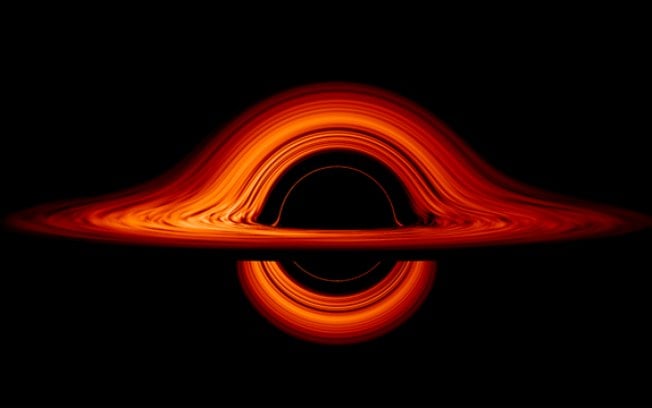Scientists from the National Aeronautics and Space Administration (NASA) have managed, through a supercomputer, to produce a video illustration that shows what the experience of diving and floating and a black hole would be like.
The material explains several versions of the same situation and tries to translate extremely complex concepts of physics into the visual field. Check it out:

The video is more than a simple simulation – it was created based on specific calculations from an acclaimed paper in the scientific community. The simulation targets a supermassive black hole, just like the one at the center of our galaxy.
The camera, which simulates the astronaut, was placed about 400 million miles (640 million kilometers) from the black hole, which is about 40 million miles wide. As it approaches, the hot disk of dust and gas swirling around the black hole begins to elongate and brighten brighter and brighter.
The effect is similar to the sound of a race car that, when approaching, is amplified based on its speed.
Then the supercomputer takes over, and the stars, the dust disk, and a band of photon rings begin to deform.
Since the
laws of general relativity do not apply to a black hole, it is difficult to predict what would happen to a body upon entering that ‘environment’. However, recent research can already point to what would happen to light.
“People eventually ask about [what it would be like to fall into a black hole], and simulating these hard-to-imagine processes helps me connect the math of relativity to real consequences in the universe,” says Jeremy Schnittman, an astrophysicist at NASA’s Goddard Space Flight Center in Greenbelt, Maryland, who created the visualizations.
“So I simulated two different scenarios, one where a camera, in place of an astronaut, just misses the event horizon and is propelled back out, and another where the object crosses the border and seals its fate,” says the astrophysicist.
The project generated about 10TB of data and took about 5 days to complete – which would take a decade on a normal computer.
Want to stay on top of the day’s top news? Click here and join our WhatsApp channel


